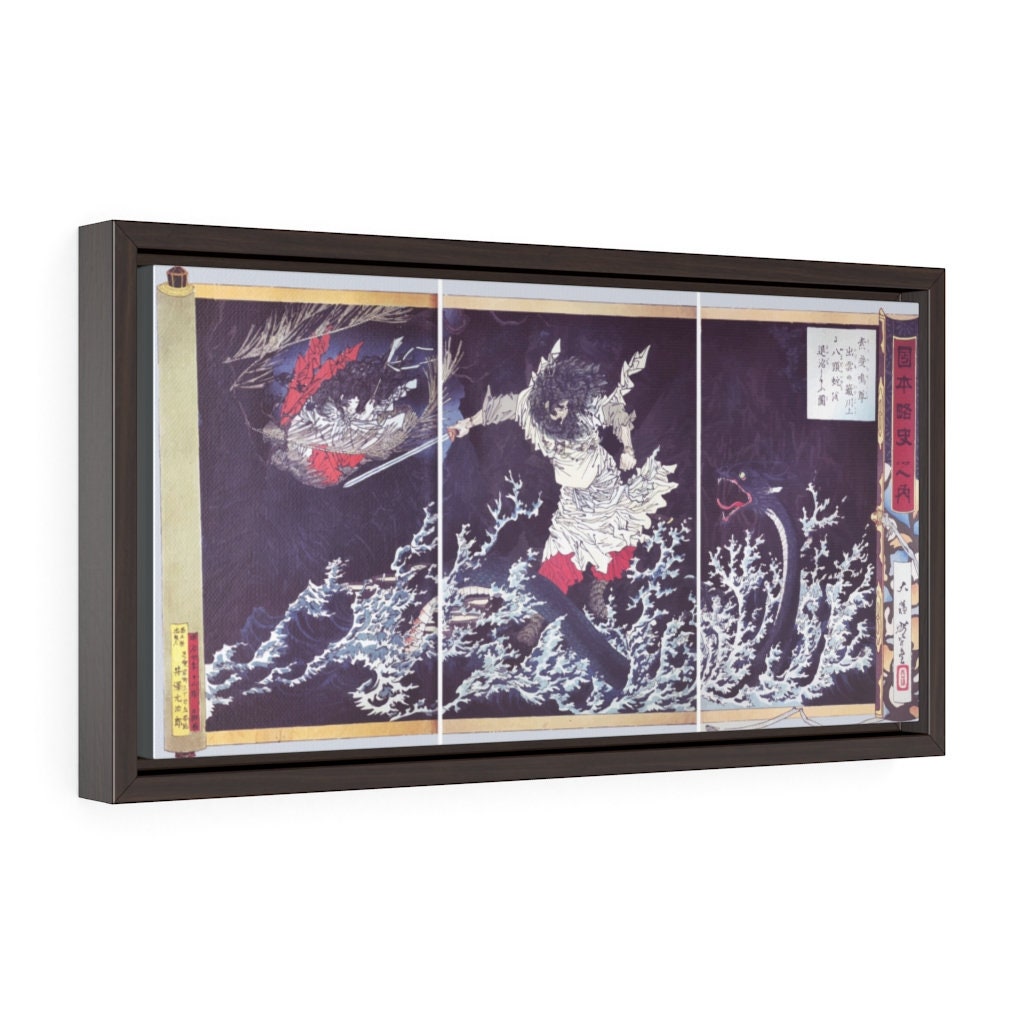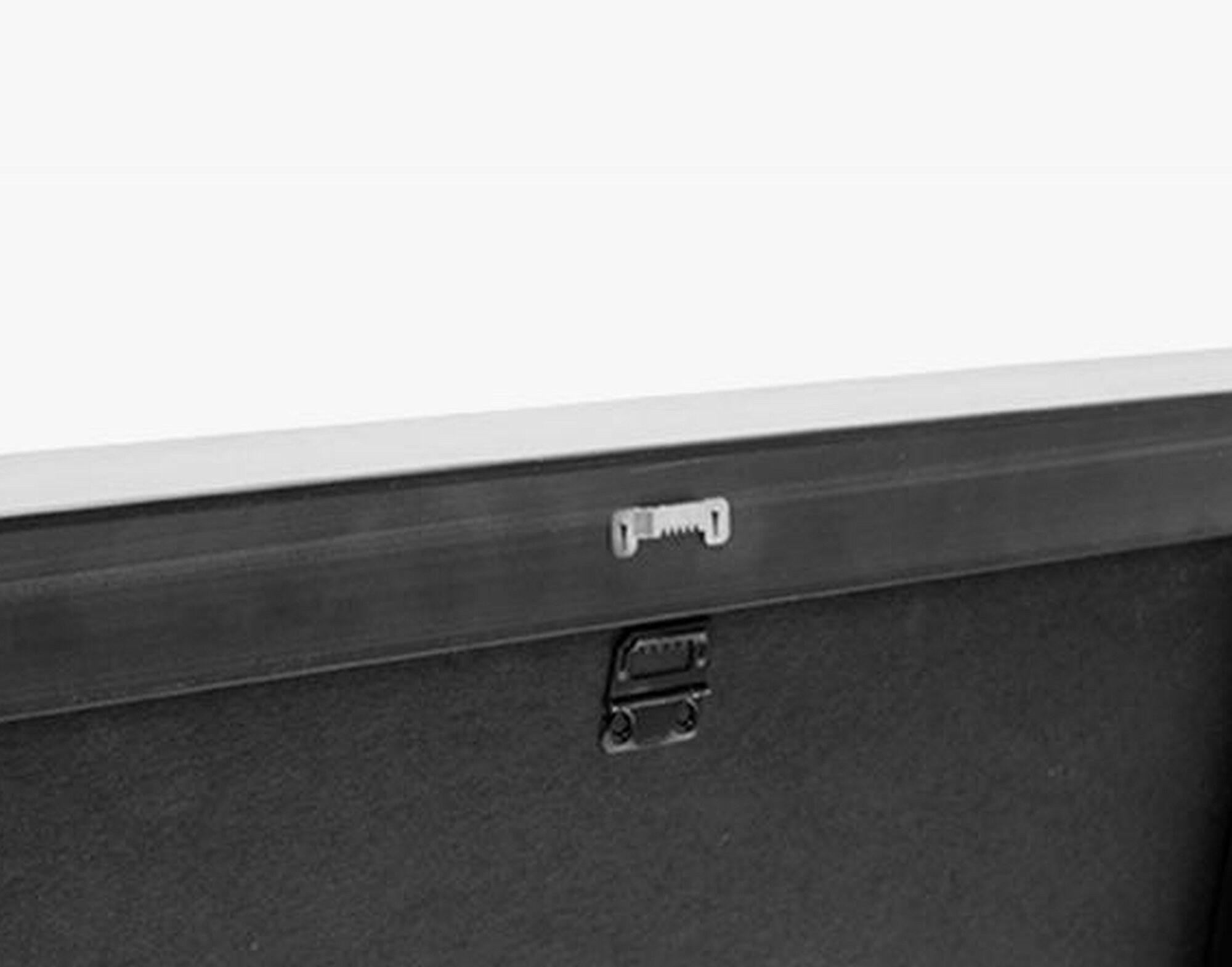Susanoo Slaying Yamata No Orochi: Japanese Folklore Framed Canvas Print (20x10)
$51.81
More Japanese artwork: https://www.vintageartwork.com/search?q=japanese
Design is from a Ukiyo-e triptych, by Tsukioka Yoshitoshi in 1887, called "Susanoo slaying the Yamata no Orochi", showing Susanoo no Mikoto slaying the 8–headed serpent Yamata-no-Orochi upstream of the river at Hirokawa in Izumo Province.
Susanoo is a kami in Japanese mythology. The younger brother of Amaterasu, goddess of the sun and mythical ancestress of the Japanese imperial line, he is a multifaceted deity with contradictory characteristics (both good and bad), being portrayed in various stories either as a wild, impetuous god associated with the sea and storms, as a heroic figure who killed a monstrous serpent, or as a local deity linked with the harvest and agriculture. Syncretic beliefs that arose after the introduction of Buddhism to Japan also saw Susanoo becoming conflated with deities of pestilence and disease.
This canvas will always look as tight and flat as the day it was made. It's frame was built with a solid face to support the canvas and prevent deforming. Pre-installed hanging hardware is built into the frame, along with protective felt bumpers. The hanging hardware is placed at the top of the frame.
Sizes:
• 20" wide x 10" high
Canvas specs:
• Material: Ultra smooth, 100% cotton rag canvas
• Material quality: Finely textured artist-grade cotton substrate
• Surface finish: Matte
• Cotton rag fabric weight: 400 GSM (11.80 oz/y²)
Canvas framing specs:
• Wrapped canvas frame thickness: 1.25"
• Framing quality: Beautifully finished, taut corners that give a clean and crisp look
Ink specs:
• Canon 12-color Aqueous ink
• Acid free, archival quality
Picture frame molding specs:
• Material: Recycled plastic
• Frame color: Walnut
• Frame thickness: 1.25"
• Hanging hardware: Attached
• Protective bumpers: Felt
• Lightweight
Shipping from United States
Processing time
1-7 business days
Customs and import taxes
Buyers are responsible for any customs and import taxes that may apply. I'm not responsible for delays due to customs.
Payment Options
Returns & Exchanges
I gladly accept returns and exchanges
Just contact me within: 14 days of delivery
Ship items back to me within: 30 days of delivery
I don't accept cancellations
But please contact me if you have any problems with your order.
The following items can't be returned or exchanged
Because of the nature of these items, unless they arrive damaged or defective, I can't accept returns for:
- Custom or personalized orders
- Perishable products (like food or flowers)
- Digital downloads
- Intimate items (for health/hygiene reasons)
Conditions of return
Buyers are responsible for return shipping costs. If the item is not returned in its original condition, the buyer is responsible for any loss in value.
Frequently Asked Questions
What is All-Over-Print (AOP)?
All-Over Print (AOP) is a printing method that uses dye-sublimation to print a design onto polyester. During the dye sublimation process the dye is absorbed into the fabric. Since, it is not printed on the surface, like most t-shirts, it provides for a fantastic soft-to-the-touch feel and superior breathability.
AOP is a more time consuming method than screen printing or direct-to-garment (DTG) printing, so the prices are higher and the production times are longer, but the results are most definitely worth it.
Advantages of AOP:
The design won't peel off, unlike typical screen printing.
The design is part of the fabric of the item, so it will last as long as the item does.
The intensity of color is often unmatched.
What is Giclée?
Giclée (pronounced zhee-CLAY or often gee-CLAY) is a printing process that creates a museum quality, archival print. Special acid-free, paper is printed with fade resistant ink using a state-of-the-art, large format inkjet printer.
What is a gallery wrap canvas?
Gallery wrap is a style of displaying a canvas that doesn't show any visible staples or nails holding the fabric to the wooden stretcher bars. This style of canvas is intended to be hung unframed.
What is a gallery mirror wrap canvas?
Mirrored edges (mirror wrap) is used to show the whole image on the main surface, rather than printing the edges of the image on the sides (image wrap) of the canvas frame. It is usually used when there is necessary detail on the edges of the image. Image wrap is used when the focal point of the image is in the center.

